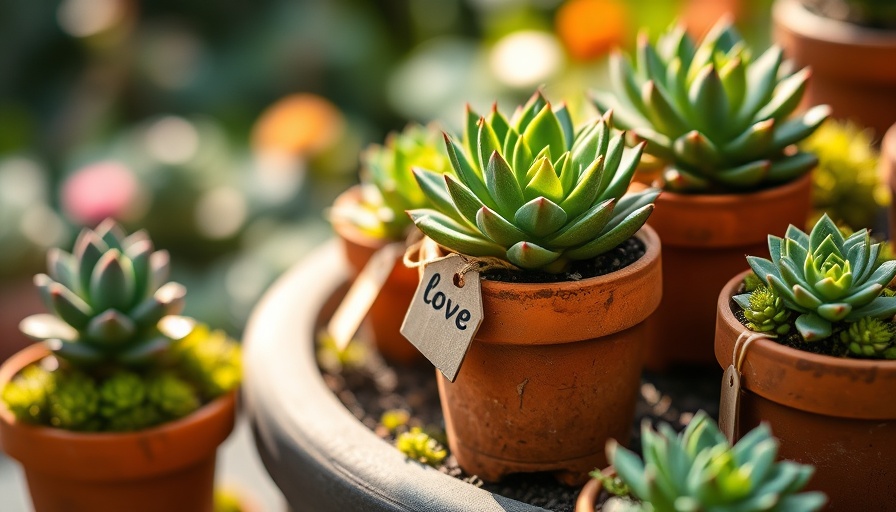
Discovering the Best Locations for Your Succulents
As interest in gardening continues to flourish, succulents are among the top choices for both novice and experienced gardeners alike. Their unique forms and resilient nature make them ideal for various settings, but the question remains: where should you plant your succulents? This 2024 guide will explore the fundamental conditions needed for your succulents to thrive.
Understanding the Importance of Environment
When it comes to planting succulents, a few key factors will dictate your plant's success: light, temperature, humidity, and moisture levels. The good news is that once you understand these variables, you can create optimal conditions tailored to the specific needs of your plants.
Optimal Light Conditions for Succulents
Light is the first vital consideration when planting succulents. The general rule of thumb is that succulents either thrive in sun or shade, depending on their type. For example, popular shade-loving succulents such as Haworthia, Aloe, and Peperomia prefer conditions that provide 80% shade. Therefore, they would do well on a shaded patio or an indoor windowsill where they can receive filtered sunlight.
On the other hand, sun-loving succulents, such as Echeveria, Crassula, Aeonium, and Sedum, require more robust sunlight exposure and will thrive outdoors or on windowsills that receive plenty of direct sunlight. If you plan to transition sun-loving plants from shade to sun, consider gradually acclimating them to prevent sunburn.
Temperature: A Crucial Factor
Succulents can be sensitive to temperature extremes. Most varieties will struggle in temperatures below 30°F (-1°C) and may not survive very high temperatures above 100°F (37.7°C). Therefore, gardeners living in regions with colder climates may have to rethink outdoor planting. It’s advisable to bring potted succulents indoors during freezing nights or use a greenhouse for protection during extreme weather. Proper temperature management is essential for maintaining healthy succulents.
Humidity and Rainfall Considerations
Humidity is another key factor that affects succulents significantly. Many succulents prefer drier air, which is crucial for preventing issues such as root rot caused by excessive moisture. For gardeners in highly humid areas, use soil designed for succulents and place your plants in well-ventilated spots to mitigate moisture accumulation. Additionally, areas prone to heavy rainfall may not be suitable for succulents; consider raised garden beds or pots to allow for drainage.
Practical Tips for Planting Succulents
Whether you're new to urban gardening or a seasoned pro, here are a few practical insights to ensure your succulents flourish:
- Choose the Right Soil: Use well-draining soil specifically formulated for succulents.
- Drainage is Key: Make sure pots have drainage holes to prevent water buildup.
- Move Outdoors Gradually: If bringing succulents from indoors, transition them outside over a period of days.
- Group Succulents Wisely: Arrange sun-loving and shade-loving varieties, allowing for their individual needs.
Embracing the Joy of Succulent Gardening
By understanding the light, temperature, humidity, and moisture levels needed for your succulents, you can create beautiful arrangements that enhance your living space. Growing succulents can be an immensely rewarding process, encouraging you to take ownership of your environment while bringing a touch of nature indoors. Whether you’re part of a community garden or gardening in your living room, consider these tips to start your succulent journey.
Ready to elevate your gardening experience? Dive into the world of urban farming and explore how growing your plants can enrich your life.
 Add Row
Add Row  Add
Add 




 Add Row
Add Row  Add
Add 

Write A Comment